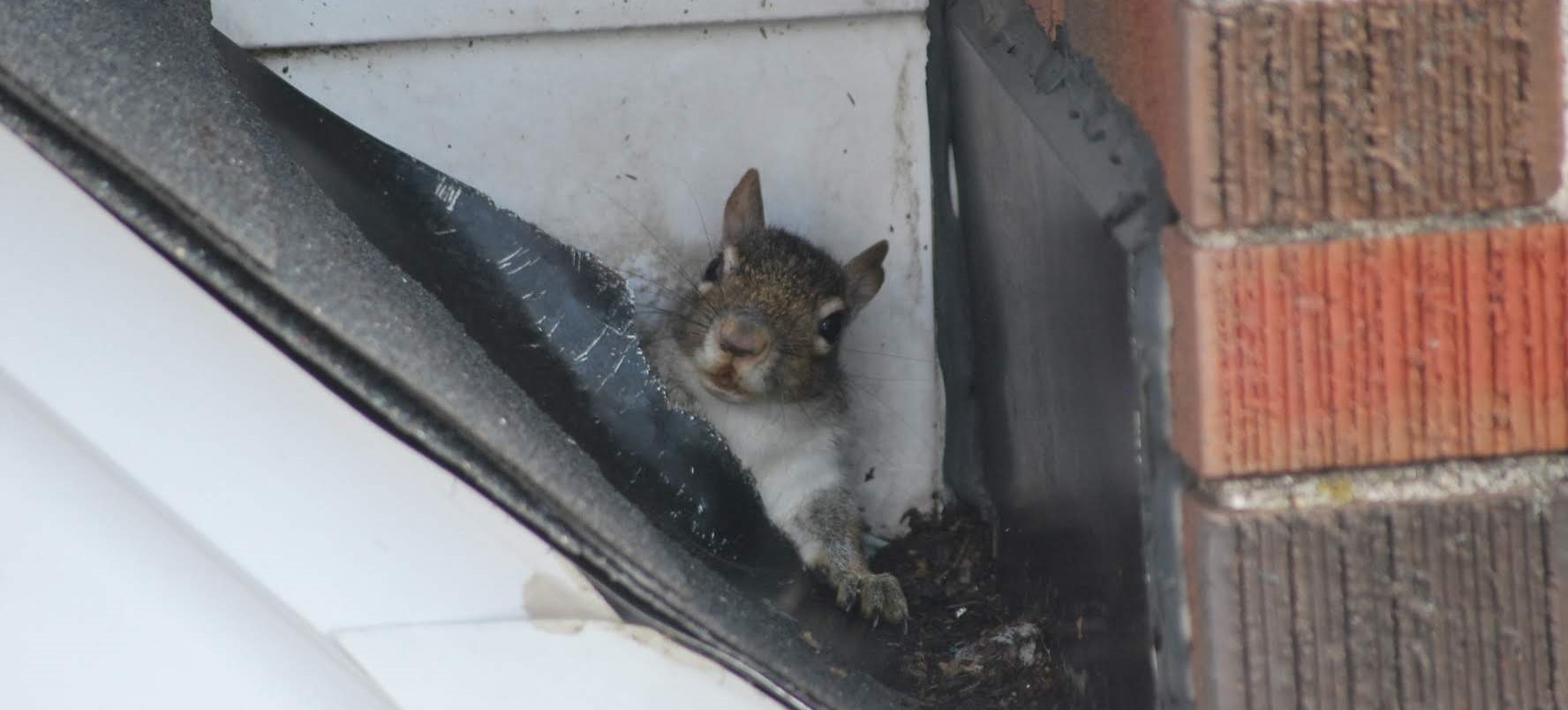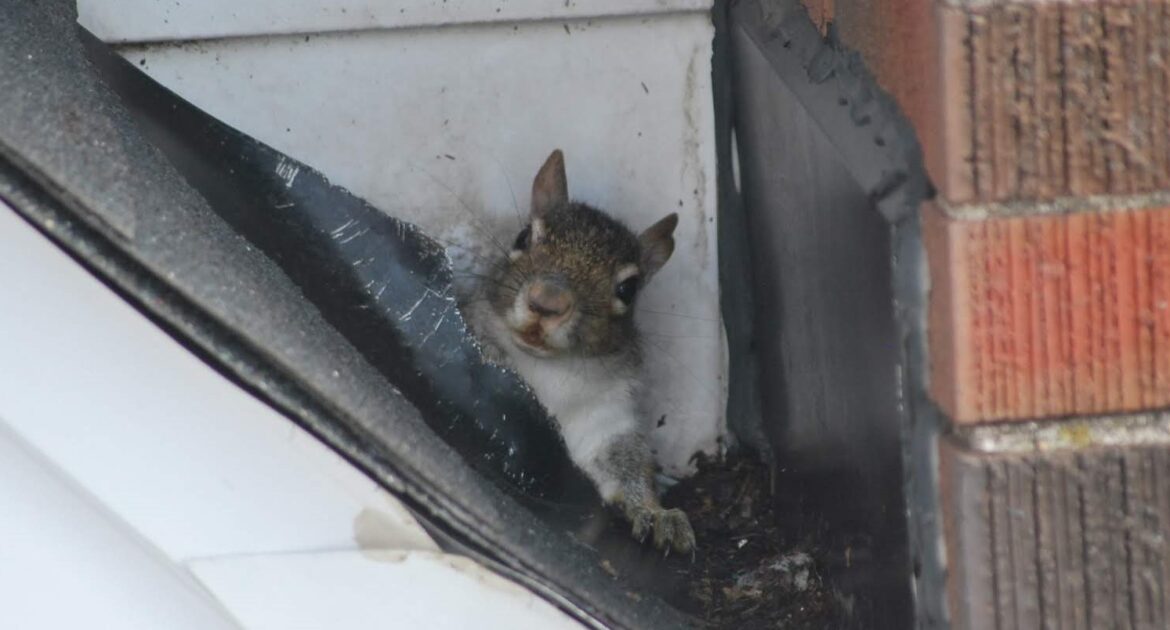Squirrels are everywhere – jumping through the trees, scampering across yards, and even making themselves at home in attics.
But how much do you really know about these animals? There are plenty of squirrel myths out there, and many of them simply aren’t true.
By separating squirrel facts from the misconceptions about squirrels, you can better understand these clever creatures and how to handle unwanted encounters with them.
At Skedaddle Humane Wildlife Control in Toronto, we’ve heard all kinds of assumptions about squirrels – some amusing, others outright wrong.
That’s why we’re here to clear the air and help debunk some of the most common squirrel myths. From what drives their behaviour to how they interact with humans, you might be surprised to learn the truth about squirrels.
Common Squirrel Myths – Exposed
When it comes to squirrels, not everything you’ve heard is accurate. Some ideas have been around for so long they’ve simply been accepted as fact. Below, we’ll tackle the key myths about squirrels and uncover the truth behind each one.
Myth 1: Squirrels Hibernate During the Winter
It’s a common misconception that squirrels disappear for the winter because they hibernate. While it’s true that some animals enter into hibernation in cold weather, squirrels operate differently. Grey squirrels, for example, remain active all year round, even during the chilliest months.
Here’s how squirrels prepare for winter:
- Food storage: They create caches of food in various locations to ensure they have enough to eat when resources are scarce.
- Finding shelter: Squirrels look for warm, protected spots to wait out storms or extremely cold conditions. Unfortunately, this can sometimes mean your attic.
Fact: Squirrels do not hibernate but adapt their behaviour to survive the winter months.
Myth 2: Squirrels Always Find Every Nut They Bury
The image of squirrels burying acorns and retrieving them later is iconic. But are these animals as good at tracking their hidden treasures as people believe? Not exactly. While they’re skilled at remembering some stash locations, they aren’t perfect.
Here’s what happens to the nuts they bury:
- Some Are Recovered: Squirrels rely on memory and even their sense of smell to find buried food.
- Some are Forgotten: Many nuts are never retrieved, which might seem wasteful, but actually benefits the environment.
- Forgotten Nuts Grow Into Trees: This “forgetfulness” helps forests grow and thrive.
Fact: These animals bury more food than they need, but not every nut gets recovered.
Myth 3: Squirrels Are Harmless
To many, these animals look like innocent, fluffy animals who wouldn’t hurt a fly. While they are fascinating and resourceful animals, squirrels can certainly cause problems when they invade homes or get too comfortable around humans.
A squirrel in your attic can cause extensive damage by chewing on wires, structural materials, and insulation. They’re also known to bring debris and, occasionally, parasites into living spaces.
Fact: Squirrels can cause significant damage to property when they gain access to homes.
Myth 4: Squirrels Only Eat Nuts
A popular misconception about squirrels is that their diet revolves solely around nuts. While nuts are a favourite, these animals have a much more varied diet. They’ll also eat seeds, fruits, vegetables, insects, and even small bird eggs when given the opportunity. They’re opportunistic feeders, adapting to what’s available in their environment.
Fact: Squirrels eat a wide variety of foods beyond just nuts.
Myth 5: You Can Quickly Handle Squirrel Problems on Your Own
When squirrels settle in your attic or other parts of your property, it’s tempting to think you can resolve the issue yourself. However, DIY removal methods are often ineffective and can lead to further problems, such as repeat infestations or injuries. Squirrels are persistent animals, and without proper measures in place, they’re likely to find their way back in after being “removed.”
That’s why professionals like our experienced team at Skedaddle use proven methods such as one-way doors. These allow squirrels to leave your home safely while preventing them from re-entering. It’s a humane and effective approach that minimizes stress for both the animal and the homeowner.
Fact: Professional help is the best way to safely and permanently remove squirrels.
Squirrel Facts That May Surprise You
Now that we’ve busted some myths, let’s turn our attention to some interesting squirrel facts. These clever animals have plenty of fascinating traits worth learning about.
- They’re Excellent Problem-Solvers: Squirrels are like little geniuses when it comes to solving problems. Imagine a squirrel trying to get to a bird feeder. It might climb, jump, or even hang upside down to figure out how to reach the food. Studies show that these animals can remember how they solved a puzzle before and use that same trick again later. Even better, they learn from their mistakes and get better at solving problems over time. This makes them one of the smartest animals in your backyard!
- They Can Fall From Great Heights: Have you ever seen a squirrel jump from a tall tree and land safely? It’s not magic—it’s science! Squirrels have special ankles that can rotate, which helps them grab onto tree trunks or branches when they fall. Plus, their big, bushy tails act like parachutes, slowing them down as they drop. This amazing skill lets them survive falls from as high as 30 metres (100 feet). That’s like jumping off a 10-story building and walking away like nothing happened!
- Their Front Teeth Never Stop Growing: Squirrels have teeth that grow all the time, just like other rodents. Their front teeth, called incisors, can grow up to 6 inches a year! To keep their teeth from getting too long, they chew on all kinds of things, like wood, nuts, and even wires. This constant gnawing helps file their teeth down to the right size. It’s one of the reasons squirrels are always busy nibbling on something.
- They Communicate in Surprising Ways: Squirrels have their own way of talking to each other. They make all kinds of sounds, like barking, screeching, and even purring. But that’s not all—they also use their tails to send messages. For example, if a squirrel sees a predator, it might flick its tail to warn others. This mix of sounds and body language helps them stay safe and share important information with their friends.
How Skedaddle Handles Squirrel Challenges
At Skedaddle Humane Wildlife Control, we understand the frustration and damage that squirrels can cause when they find their way into homes. Our approach prioritizes both humane practices and permanent solutions. One of the key tools we use is the one-way door system. This clever device allows them to exit your home but blocks them from getting back inside. It’s a safe and effective way to remove squirrels without harming them or jeopardizing your home.
We also focus on sealing all potential entry points to prevent future infestations. Once these animals are out, our team will clean and restore any damage, ensuring your home is safe and secure once again.
Need Help With Squirrels? Request an Estimate Today!
Misunderstanding squirrel myths and facts can lead to assumptions that may cause property damage or unnecessary frustration. For effective and humane squirrel removal, trust the experts at Skedaddle Humane Wildlife Control in Toronto.
Our reliable methods, like one-way doors, ensure your home stays squirrel-free while keeping the animals safe. Contact us today to request an estimate and take the first step toward solving your squirrel challenge!




